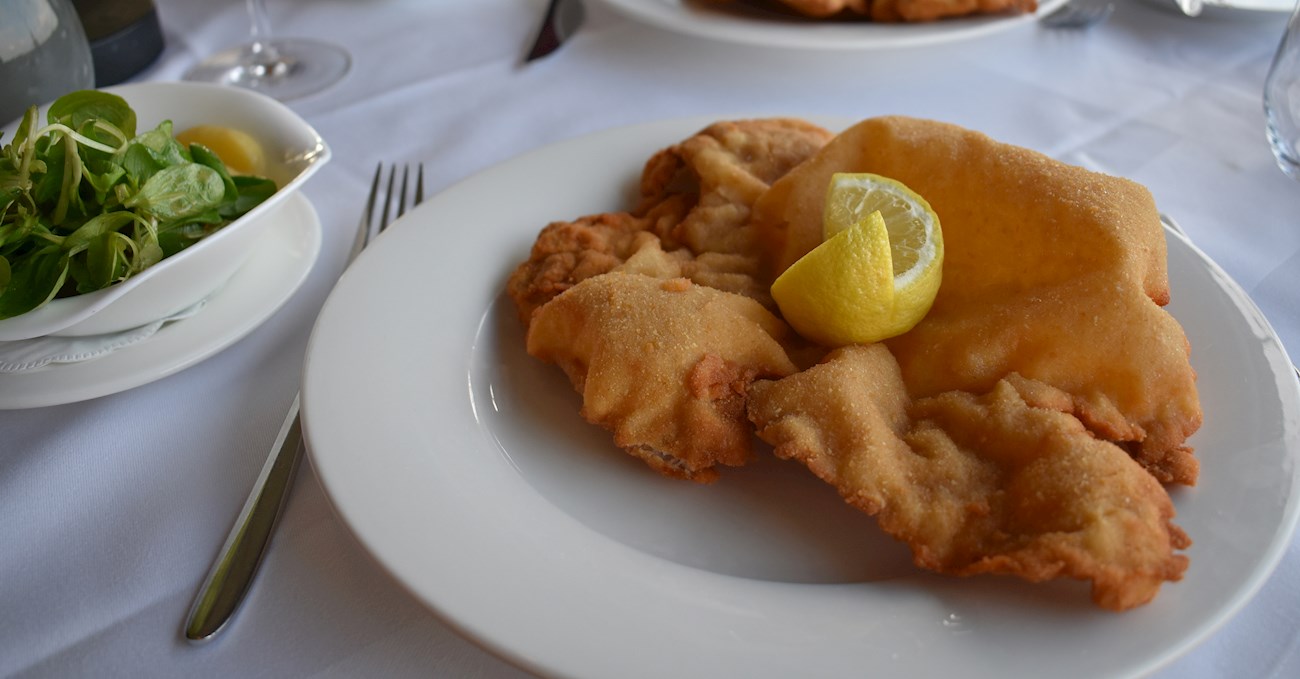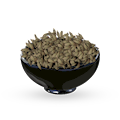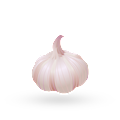Çökertme kebabı is a traditional kebab variety originating from the Bodrum area. The dish consists of marinated strips of veal that are served with tiny fried potatoes, tomato sauce, and yogurt. The marinade is usually made with milk, olive oil, cumin, salt, and paprika, while the yogurt sauce that's served with the dish is enriched with garlic and salt.
The meat is fried, then placed over the fried potatoes and the yogurt sauce. The tomato sauce is placed on the meat, and some people might garnish the dish with thyme sprigs or a few sautéed peppers and tomatoes.
MAIN INGREDIENTS
One of the best-known dishes of Austrian cuisine, the Wiener schnitzel is a thinned, breaded, and pan-fried veal cutlet that is traditionally served with a dollop of lingonberry jam, lemon wedges, and either buttered parsley potatoes, a simple potato salad, or french fries.
The dish is protected under Austrian law, and—if it is to be called Wiener schnitzel—it must be made with veal. However, pork is often used instead of veal because it's more available and cheaper.
MOST ICONIC Wiener Schnitzel
View moreFrankfurter schnitzel is a traditional dish originating from Frankfurt. The dish is very similar to the famous Wiener schnitzel, which is always made with veal, but this version from Frankfurt can be prepared with other types of meat such as pork.
The meat is pounded thin, coated with flour, dipped in beaten eggs, and dredged in breadcrumbs before it's fried in clarified butter (or a mixture of oil and butter) on both sides until golden brown and crispy. Once done, frankfurter schnitzel is traditionally served with grüne soße (green sauce), and often boiled potatoes and chopped hard-boiled eggs on the side.
It's recommended to squeeze some lemon juice over the schnitzel before eating, while Apfelwein is the preferred accompanying beverage.
Piccata al limone is a traditional meat dish originating from Italy. Although there are many recipes, the dish is usually made with a combination of veal scallops, butter, lemon juice, flour, parsley, and salt. The veal is pounded with a mallet, sprinkled with flour, cooked in butter over high heat on both sides, and then seasoned with salt.
A mixture of water and lemon juice is poured into the pan and cooked until reduced. It's then sprinkled with chopped parsley and dotted with butter. Once the butter has melted, the veal scallops are removed from the pan and served in lemon sauce. Baked potatoes are a perfect accompaniment to this dish.
Locally known as l'oss bus a la Milanesa, these wine-braised veal shanks are a classic of northern Italian cuisine and one of Milan's most cherished signature dishes. Ossobuco is believed to have been prepared in local trattorias for centuries, although the first written recipe was found in Pellegrino Artusi's 1891 cooking manual La Scienza in Cucina e l’Arte di Mangiar Bene.
The word ossobuco translates to hollow bone — the cut of veal used for this dish is sliced horizontally through the bone and exposes the marrow, which is what gives the dish its buttery richness. Slow-cooked in beef broth until the meat becomes soft enough to cut with a fork, ossobuco is finished with a topping of gremolà or gremolada, a zesty herb relish made with mashed anchovies, minced garlic, parsley, and lemon zest.
MOST ICONIC Ossobuco alla Milanese
View moreCachopo is a meaty delicacy from the Spanish region of Asturias, consisting of two veal or beef steaks filled with cheese and a slice of ham. The whole concoction is then coated in breadcrumbs and fried in hot oil. The dish is traditionally served with roasted potatoes, grilled peppers, and mushrooms on the side.
Today, there are numerous versions of this classic dish prepared with fish, chicken, or pork.
MOST ICONIC Cachopo
View moreMAIN INGREDIENTS
Just like its distant Viennese cousin, cotoletta alla Milanese is a thinly pounded, breaded, pan-fried veal cutlet. Although similar, the two dishes do differ slightly: the Viennese version is traditionally dipped in both flour and bread crumbs before being fried in oil, butter, or a combination of both, while the Milanese version is cooked bone-in and uses only bread crumbs and butter.
It is often suggested that the similarities between these two culinary classics are not purely coincidental, as Milan was a part of the Austro-Hungarian Empire in the 17th and 18th century. However, when responding to any superficial comparison between the cotoletta and Wiener schnitzel, the Milanese will proudly point out that their dish has been a specialty of Milan and Lombardy since the 12th century.
MOST ICONIC Cotoletta alla Milanese
View moreFricandó amb moixernons is a classic Catalan dish of casseroled veal. There are as many variations on this dish as there are cooks. Dating back to the beginning of the 18th century, the dish is prepared with small, flattened slices of veal (rump, shank, round, flank), onions, carrots, tomatoes, almonds, garlic, flour, white wine, carquinyoli biscuits, and moixernons (fairy ring mushrooms).
Optional ingredients include bacon and a bit of dark chocolate. The meat is covered with the sauce and a picada consisting of parsley, chopped garlic, and carquinyoli biscuits. Fricandó amb moixernons is usually left to stand for a few hours or even a few days before serving so that the flavors become even better.
MAIN INGREDIENTS
Greek sofrito is a dish consisting of tender cuts of beef or veal that are lightly dredged in flour and then slowly sautéed in a flavorful sauce based on white wine, which is additionally seasoned with garlic, parsley, and vinegar. Though it is considered a delicacy that hails from Corfu, it is commonly enjoyed throughout the country.
Because the term sofrito stems from the Italian language, meaning to sautée, and the whole island was under the Venetian rule for centuries, it is believed that the dish was inspired by traditional Venetian cuisine. Greek sofrito is typically accompanied by rice, potatoes, or crusty bread.
MOST ICONIC Sofrito
View moreMAIN INGREDIENTS
This dish is one of the most traditional Roman dishes, and it is deeply rooted in regional cuisine. The name of this Italian classic comes from salti in bocca, meaning it jumps in the mouth, which is exactly what the flavors of saltimbocca do.
The dish consists of tender, pan-fried veal cutlets that are wrapped in Italian prosciutto, flavored with fresh sage, then sautéed in white wine. Even though the original recipe for saltimbocca is supposedly centuries old, the first written trace of this dish was found in Pellegrino Artusi’s 1891 cookbook La Scienza in Cucina e l’Arte di Mangiar Bene, in which he claims to have enjoyed this famed dish at Roman trattoria Le Venete.
MOST ICONIC Saltimbocca alla Romana
View moreTasteAtlas food rankings are based on the ratings of the TasteAtlas audience, with a series of mechanisms that recognize real users and that ignore bot, nationalist or local patriotic ratings, and give additional value to the ratings of users that the system recognizes as knowledgeable. For the “Top 54 Veal Dishes in the World” list until March 20, 2025, 2,188 ratings were recorded, of which 1,649 were recognized by the system as legitimate. TasteAtlas Rankings should not be seen as the final global conclusion about food. Their purpose is to promote excellent local foods, instill pride in traditional dishes, and arouse curiosity about dishes you haven’t tried.




















































